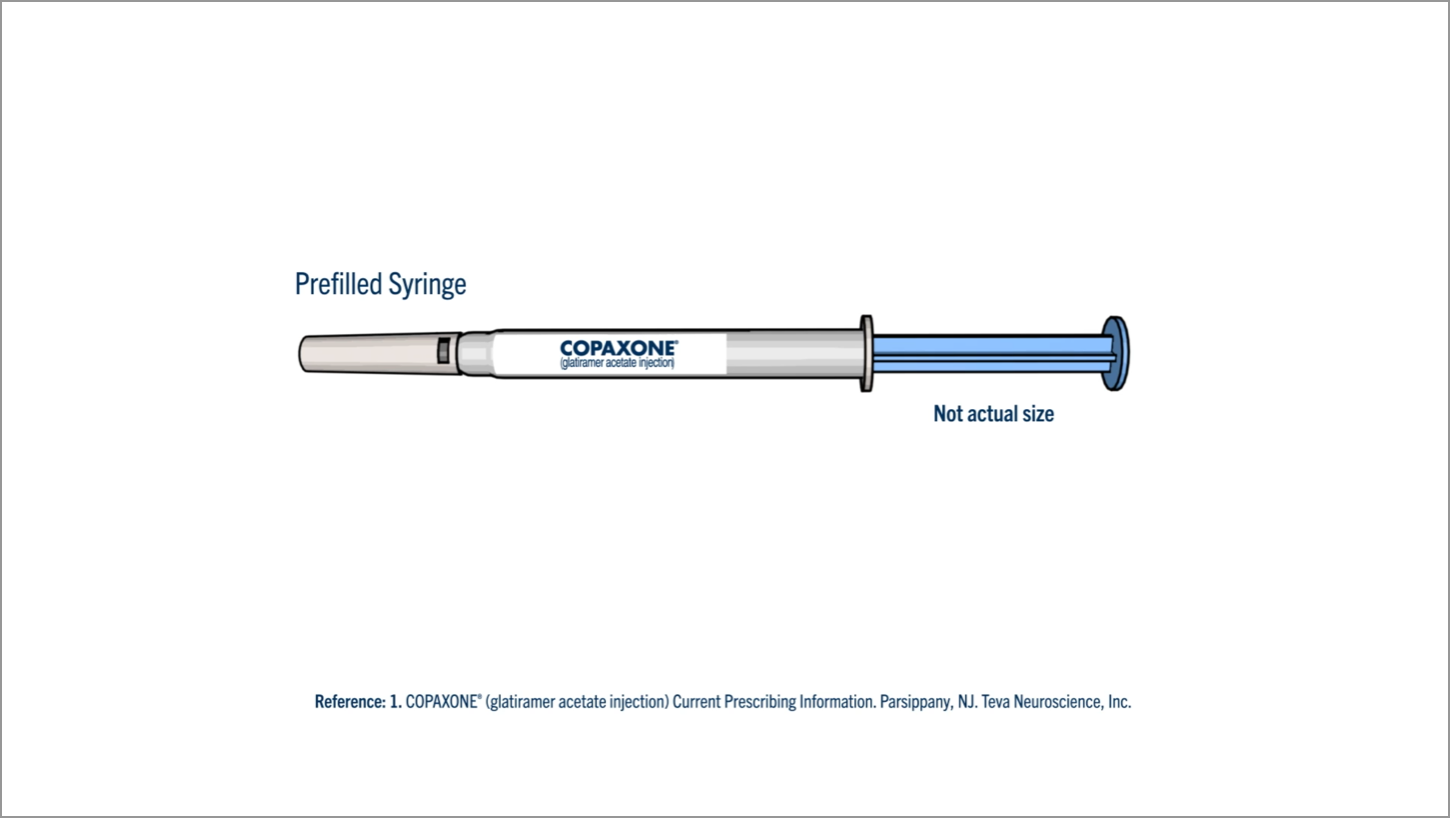UNDERSTANDING INJECTIONS
At home or on the go, learn what’s right for you.
It’s important to know how and where to inject. For injection training assistance, rely on downloadable resources or schedule an appointment with your healthcare provider.
Starting COPAXONE®
Switching to COPAXONE® 40 mg
GETTING COMFORTABLE WITH INJECTIONS
COPAXONE® comes in a prefilled syringe with needle attached. How often a dose is given depends on the product strength that is prescribed. Your doctor will prescribe the correct dose for you.

For subcutaneous injection only. Do not inject COPAXONE in your veins (intravenously). Do not re-use your COPAXONE prefilled syringe. Do not share your COPAXONE prefilled syringe with another person.1
Ready for fewer injections?
Ask your doctor about 3-times-a-week COPAXONE® 40 mg.

With 3-times-a-week COPAXONE® 40 mg, you’re in control of your MS therapy ROUTINE.1
-
Choose a consistent (approximately the same time and on the same days each week) 3-times-a-week schedule that works wherever—and whenever— for you (example: Monday, Wednesday, and Friday); injections must be at least 48 hours apart.1
Watch our COPAXONE® injection video for step-by-step instructions:

Wherever you are in your therapy experience, training matters.
Even if you have used an injectable therapy before, you should be trained by a doctor or nurse before injecting COPAXONE® for the first time.
Reference:
-
COPAXONE® (glatiramer acetate injection) Current Prescribing Information Parsippany, NJ. Teva Neuroscience, Inc.
You are about to leave COPAXONE.com and enter a website operated by a third party.
Would you like to continue?
The information on this site is intended for healthcare professionals in the United States. Are you a healthcare professional in the United States?



